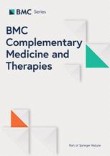
“Introduction: The endogenous cannabinoid (endocannabinoid) system is an emerging target for the treatment of chronic inflammatory disease with the potential to advance treatment for many respiratory illnesses. The varied effects of endocannabinoids across tissue types makes it imperative that we explore their physiologic impact within unique tissue targets. The aim of this scoping review is to explore the impact of endocannabinoid activity on eicosanoid production as a measure of human airway inflammation.
Methods: A scoping literature review was conducted according to PRISMA-ScR (Preferred Reporting Items for Systematic reviews and Meta-Analyses extension for Scoping Reviews) guidelines. Search strategies using MeSH terms related to cannabinoids, eicosanoids, cyclooxygenase (COX), and the respiratory system were used to query Medline, Embase, Cochrane, CINAHL, Web of Science, and Biosis Previews in December 2021. Only studies that investigated the relationship between endocannabinoids and the eicosanoid system in mammalian respiratory tissue after 1992 were included.
Results: Sixteen studies were incorporated in the final qualitative review. Endocannabinoid activation increases COX-2 expression, potentially through ceramide-dependent or p38 and p42/44 Mitogen-Activated Protein Kinase pathways and is associated with a concentration-dependent increase in prostaglandin (PG)E2. Inhibitors of endocannabinoid hydrolysis found either an increase or no change in levels of PGE2 and PGD2 and decreased levels of leukotriene (LT)B4, PGI2, and thromboxane A2 (TXA2). Endocannabinoids increase bronchial epithelial cell permeability and have vasorelaxant effects in human pulmonary arteries and cause contraction of bronchi and decreased gas trapping in guinea pigs. Inhibitors of endocannabinoid hydrolysis were found to have anti-inflammatory effects on pulmonary tissue and are primarily mediated by COX-2 and activation of eicosanoid receptors. Direct agonism of endocannabinoid receptors appears to play a minor role.
Conclusion: The endocannabinoid system has diverse effects on the mammalian airway. While endocannabinoid-derived PGs can have anti-inflammatory effects, endocannabinoids also produce proinflammatory conditions, such as increased epithelial permeability and bronchial contraction. These conflicting findings suggest that endocannabinoids produce a variety of effects depending on their local metabolism and receptor agonism. Elucidation of the complex interplay between the endocannabinoid and eicosanoid pathways is key to leveraging the endocannabinoid system as a potential therapeutic target for human airway disease.”








